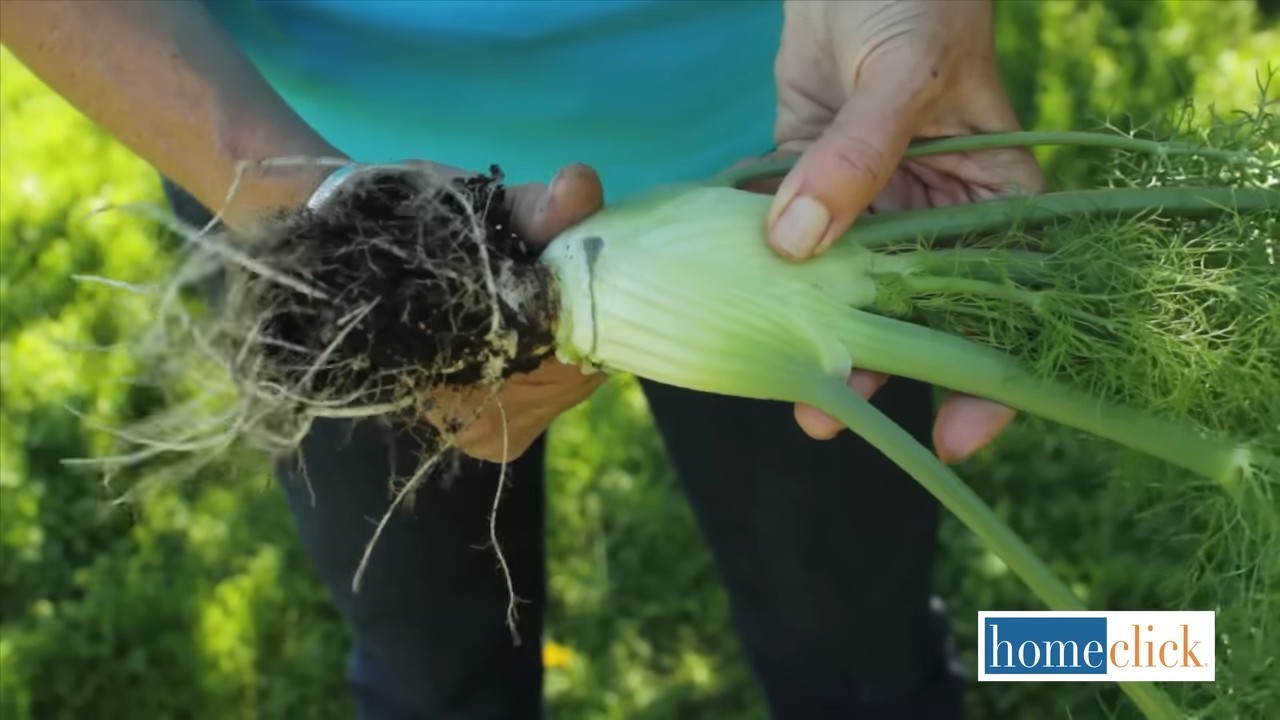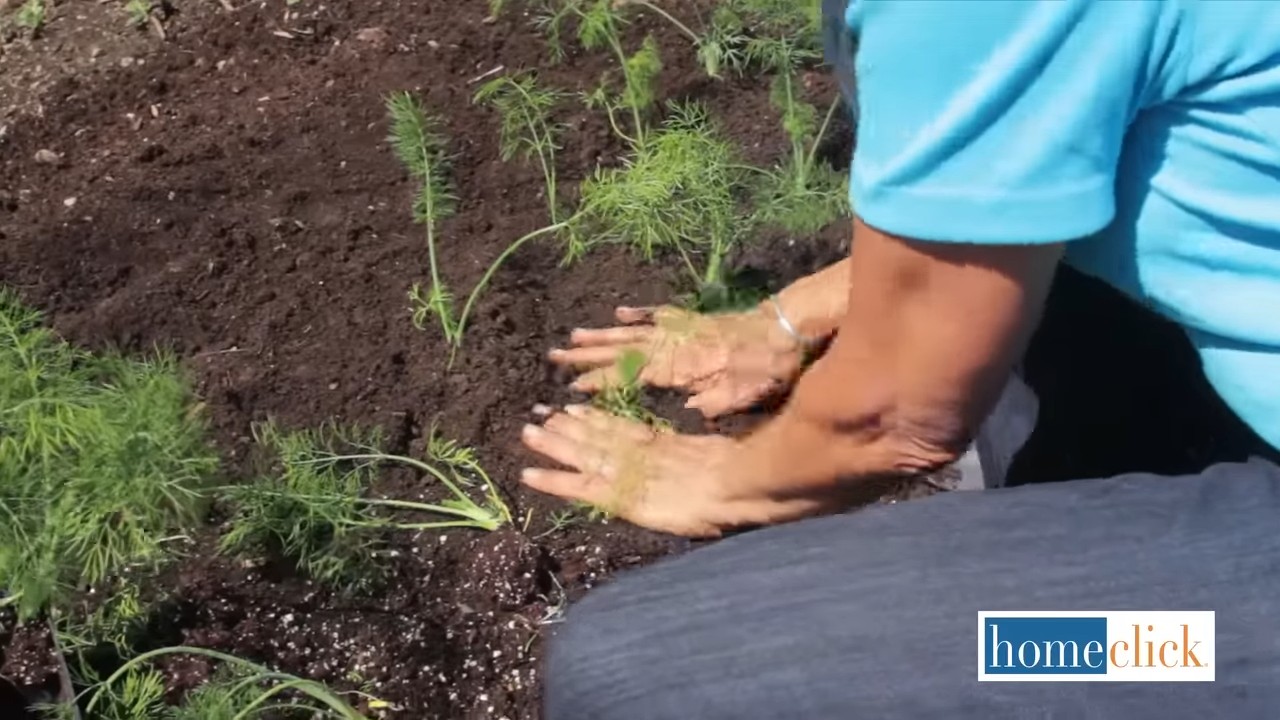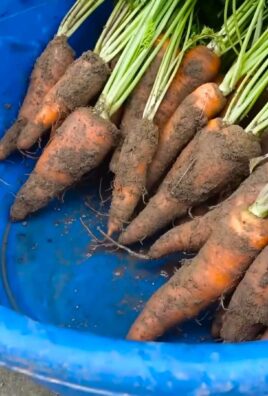Growing Fennel at Home can seem daunting, but trust me, it’s easier than you think! Imagine stepping outside your back door and snipping fresh, fragrant fennel fronds to add a burst of anise flavor to your salad or grilling fish. That’s the magic of home gardening, and fennel is a fantastic place to start.
Fennel has a rich history, dating back to ancient Roman times when it was believed to promote longevity and courage. Gladiators even consumed it to enhance their strength! While we might not be facing gladiatorial combat in our daily lives, we can still benefit from this versatile herb.
Why should you bother with this DIY project? Well, store-bought fennel often lacks the vibrant flavor of freshly harvested greens. Plus, growing your own is incredibly rewarding and sustainable. In this article, I’ll share my favorite tricks and hacks for successfully growing fennel at home, even if you have limited space or a less-than-green thumb. Get ready to unlock the secrets to a thriving fennel patch and elevate your culinary creations!

Growing Fennel at Home: A Beginner’s Guide
Hey there, fellow gardening enthusiasts! I’m so excited to share my experience with growing fennel at home. It’s surprisingly easy, and the rewards are fantastic – fresh, anise-flavored bulbs, feathery fronds for salads, and even seeds for cooking! Let’s dive into how you can cultivate this versatile herb in your own backyard or even on a sunny balcony.
Choosing Your Fennel Variety
Before we get our hands dirty, let’s talk about fennel varieties. There are two main types: bulb fennel (also called Florence fennel) and herb fennel.
* **Bulb Fennel (Florence Fennel):** This is what you’ll typically find in grocery stores. It’s grown for its swollen, bulb-like base, which has a mild anise flavor. Popular varieties include ‘Zefa Fino,’ ‘Rondo,’ and ‘Perfection.’
* **Herb Fennel:** This type is grown primarily for its leaves and seeds. It doesn’t form a bulb. ‘Bronze Fennel’ is a beautiful variety with dark, feathery foliage that adds a dramatic touch to your garden.
For this guide, I’ll focus primarily on growing bulb fennel, as that’s what I’ve had the most success with. However, the basic principles apply to both types.
Getting Started: Planting Fennel
Fennel can be grown from seed or transplants. I prefer starting from seed because it gives me more control over the process.
* **Timing is Key:** Fennel is a cool-season crop, meaning it thrives in cooler temperatures. For a spring harvest, start seeds indoors 6-8 weeks before the last expected frost. For a fall harvest, direct sow seeds in the garden in late summer.
* **Starting Seeds Indoors (Optional):** If you’re starting seeds indoors, use a seed-starting mix and sow seeds about ¼ inch deep in small pots or trays. Keep the soil moist but not soggy. Place the seedlings under grow lights or in a sunny window.
* **Direct Sowing:** If you’re direct sowing, choose a sunny spot in your garden with well-drained soil. Sow seeds about ½ inch deep and 2-3 inches apart. Once the seedlings emerge, thin them to 8-12 inches apart.
* Hardening Off Seedlings: If you started your seeds indoors, you’ll need to harden them off before transplanting them into the garden. This involves gradually exposing them to outdoor conditions over a period of 7-10 days. Start by placing them in a sheltered spot for a few hours each day, gradually increasing the amount of time they spend outdoors.
Step-by-Step Planting Guide
Here’s a detailed breakdown of the planting process:
1. **Prepare the Soil:** Fennel prefers well-drained soil that’s rich in organic matter. Amend your soil with compost or well-rotted manure before planting. This will improve drainage and provide essential nutrients. I like to add a slow-release organic fertilizer at this stage as well.
2. **Choose a Sunny Location:** Fennel needs at least 6 hours of sunlight per day to thrive. Choose a spot in your garden that gets plenty of sun.
3. **Sow Seeds or Transplant Seedlings:** If you’re direct sowing, sow seeds as described above. If you’re transplanting seedlings, dig a hole that’s slightly larger than the root ball. Gently remove the seedling from its pot and place it in the hole. Backfill with soil and water thoroughly. Space transplants 8-12 inches apart.
4. **Water Regularly:** Keep the soil consistently moist, especially during dry periods. Water deeply whenever the top inch of soil feels dry to the touch.
5. **Mulch Around Plants:** Apply a layer of mulch around your fennel plants to help retain moisture, suppress weeds, and regulate soil temperature. I like to use straw or shredded leaves.
Caring for Your Fennel Plants
Once your fennel plants are established, they’re relatively low-maintenance. Here are a few tips to keep them healthy and productive:
* **Weeding:** Keep the area around your fennel plants free of weeds. Weeds compete with fennel for nutrients and water.
* **Fertilizing:** Fennel benefits from regular feeding. Side-dress your plants with compost or a balanced organic fertilizer every few weeks.
* **Pest Control:** Fennel is generally pest-resistant, but it can be susceptible to aphids and slugs. Check your plants regularly for signs of infestation and take action if necessary. For aphids, try spraying them with a strong stream of water or using insecticidal soap. For slugs, you can use slug bait or handpick them off the plants.
* **Bolting:** Bolting is when a plant prematurely sends up a flower stalk. This can happen when fennel is exposed to hot weather or stress. To prevent bolting, keep the soil consistently moist and provide shade during the hottest part of the day. If your fennel does bolt, you can still harvest the leaves and seeds, but the bulb may become tough and bitter.
Harvesting Fennel
Harvesting fennel is the most rewarding part of the process!
* **Harvesting the Bulb:** You can harvest the bulb when it reaches about 3-4 inches in diameter. This usually takes about 80-90 days from planting. To harvest, simply loosen the soil around the bulb and pull it up.
* **Harvesting the Fronds:** You can harvest the fronds (leaves) at any time. Simply snip them off with scissors or pruning shears. The fronds have a delicate anise flavor and are great in salads, soups, and other dishes.
* **Harvesting the Seeds:** Fennel seeds are ready to harvest when the seed heads turn brown and dry. Cut off the seed heads and place them in a paper bag. Allow them to dry completely, then shake the bag to release the seeds. Store the seeds in an airtight container in a cool, dry place.
Troubleshooting Common Problems
Even with the best care, you might encounter some problems when growing fennel. Here are a few common issues and how to address them:
* **Bolting:** As mentioned earlier, bolting can be caused by hot weather or stress. To prevent bolting, keep the soil consistently moist and provide shade during the hottest part of the day. Choose bolt-resistant varieties.
* **Yellowing Leaves:** Yellowing leaves can be a sign of nutrient deficiency or overwatering. Make sure your soil is well-drained and that you’re fertilizing your plants regularly.
* **Pest Infestations:** Keep an eye out for aphids, slugs, and other pests. Take action promptly to prevent them from damaging your plants.
Using Your Homegrown Fennel
Now for the fun part – using your homegrown fennel! The possibilities are endless.
* **Bulb:** The bulb can be eaten raw in salads, grilled, roasted, or braised. It has a mild anise flavor that pairs well with seafood, chicken, and vegetables.
* **Fronds:** The fronds can be used as a garnish or added to salads, soups, and sauces. They have a more delicate flavor than the bulb.
* **Seeds:** The seeds can be used as a spice in a variety of dishes, including sausages, breads, and curries. They have a stronger anise flavor than the bulb or fronds.
I personally love to thinly slice the fennel bulb and add it to salads with oranges and olives. I also use the fronds to garnish grilled fish. And I love to add fennel seeds to my homemade bread.
Fennel’s Health Benefits
Beyond its culinary uses, fennel also offers several health benefits. It’s a good source of vitamin C, potassium, and fiber. It’s also been shown to have anti-inflammatory and antioxidant properties. Some people even use fennel seeds to aid digestion.
Tips for Success
Here are a few extra tips to help you succeed in growing fennel at home:
* Choose the Right Variety: Select a variety that’s well-suited to your climate.
* Provide Adequate Sunlight: Fennel needs at least 6 hours of sunlight per day.
* Water Regularly: Keep the soil consistently moist, especially during dry periods.
* Fertilize Regularly: Fennel benefits from regular feeding.
* Protect from Pests: Keep an eye out for pests and take action promptly.
* Harvest Regularly: Harvesting encourages new growth.
Enjoy the Process!
Growing fennel at home is a rewarding experience. It’s a great way to add fresh, flavorful ingredients to your meals and enjoy the beauty of nature. So, get out there and start planting! I’m confident that you’ll have a bountiful harvest in no time. Happy gardening!

Conclusion
So, there you have it! Growing fennel at home is not only achievable, but it’s also a rewarding experience that brings fresh, aromatic flavors right to your kitchen. We’ve walked through the essential steps, from selecting the right variety and preparing your soil to nurturing your plants and harvesting your bounty. The beauty of this DIY project lies in its simplicity and the incredible freshness you gain compared to store-bought fennel.
Why is this a must-try? Because you’re not just growing a vegetable; you’re cultivating an experience. You’re connecting with nature, learning about plant life cycles, and ultimately, enjoying the unparalleled taste of homegrown produce. Think about it: the crisp, anise-like flavor of freshly harvested fennel bulb in your salads, the feathery fronds adding a delicate touch to your soups and stews, and the aromatic seeds enhancing your spice blends. You simply can’t replicate that level of freshness and flavor with store-bought options.
But the journey doesn’t end here! Feel free to experiment with different varieties of fennel. Try growing Florence fennel for its bulb, or explore the bronze fennel for its ornamental value and flavorful leaves. Consider companion planting fennel with other herbs and vegetables to create a thriving garden ecosystem. Dill, chamomile, and rosemary are excellent companions.
And don’t be afraid to get creative with your harvest! Roast the fennel bulb with olive oil and balsamic vinegar for a sweet and savory side dish. Use the fronds to garnish your seafood dishes or blend them into a vibrant pesto. Dry the seeds and grind them into a spice blend for your favorite recipes. The possibilities are endless!
Growing fennel at home is more than just a gardening project; it’s a culinary adventure. It’s a chance to connect with your food, enhance your cooking, and enjoy the simple pleasures of homegrown produce.
We wholeheartedly encourage you to give this DIY trick a try. Start small, be patient, and don’t be afraid to experiment. We’re confident that you’ll be amazed by the results. And most importantly, we want to hear about your experience! Share your tips, tricks, and photos with us in the comments below. Let’s create a community of fennel enthusiasts and inspire others to embark on this rewarding journey. What challenges did you face? What successes did you celebrate? Your insights will be invaluable to fellow gardeners. Happy growing!
Frequently Asked Questions (FAQ)
What is the best time of year to plant fennel?
The best time to plant fennel depends on your climate. In cooler climates, start seeds indoors 6-8 weeks before the last expected frost and transplant them outdoors after the danger of frost has passed. In warmer climates, you can direct sow seeds in the spring or fall. Avoid planting during the hottest months of summer, as high temperatures can inhibit germination and growth. For bulb fennel, spring planting is generally preferred to allow the bulb to mature before the heat of summer causes it to bolt (go to seed).
How much sunlight does fennel need?
Fennel thrives in full sun, which means it needs at least 6-8 hours of direct sunlight per day. Insufficient sunlight can result in leggy growth, reduced bulb size (for bulb fennel), and diminished flavor. Choose a planting location that receives ample sunlight throughout the day. If you’re growing fennel indoors, use grow lights to supplement natural sunlight.
What type of soil is best for growing fennel?
Fennel prefers well-drained, fertile soil with a slightly acidic to neutral pH (6.0-7.0). Amend your soil with compost or other organic matter to improve drainage, fertility, and water retention. Avoid heavy clay soils, as they can become waterlogged and inhibit root growth. A soil test can help you determine the pH and nutrient levels of your soil and guide you in making necessary amendments.
How often should I water fennel?
Water fennel regularly, especially during dry periods. Keep the soil consistently moist, but avoid overwatering, which can lead to root rot. Water deeply and less frequently, rather than shallowly and more often. Mulching around the plants can help retain moisture in the soil and suppress weeds. Check the soil moisture regularly by sticking your finger into the soil about an inch deep. If it feels dry, it’s time to water.
How do I harvest fennel?
The harvesting time depends on the type of fennel you are growing. For bulb fennel, harvest when the bulb reaches a usable size, typically 2-3 inches in diameter. Cut the bulb at the base of the plant, just above the soil line. The fronds can be harvested at any time for culinary use. For fennel grown for its seeds, allow the flower heads to dry completely on the plant. Then, cut the heads and place them in a paper bag to dry further. Once dry, shake the bag to release the seeds.
Why is my fennel bolting (going to seed)?
Bolting is a common problem with fennel, especially in hot weather. It occurs when the plant prematurely produces flower stalks and seeds, which can make the bulb tough and bitter. To prevent bolting, choose bolt-resistant varieties, plant at the appropriate time of year, and provide adequate water and shade during hot weather. If your fennel does bolt, you can still harvest the seeds for culinary use.
What are some common pests and diseases that affect fennel?
Fennel is generally pest-resistant, but it can be susceptible to aphids, slugs, and snails. Aphids can be controlled with insecticidal soap or a strong spray of water. Slugs and snails can be handpicked or trapped. Diseases are less common, but root rot can occur in poorly drained soil. Ensure good drainage and avoid overwatering to prevent root rot.
Can I grow fennel in containers?
Yes, fennel can be grown in containers, but you’ll need to choose a large container (at least 12 inches in diameter) to accommodate the plant’s root system. Use a well-draining potting mix and provide adequate sunlight and water. Container-grown fennel may require more frequent watering and fertilization than fennel grown in the ground.
Is fennel a perennial or an annual?
Fennel is technically a short-lived perennial in warmer climates (zones 7-10), meaning it can live for more than two years. However, it is often grown as an annual, especially in colder climates, as it may not survive harsh winters. Even in warmer climates, the bulb quality may decline after the first year, so it’s often best to replant fennel annually for the best results.
How can I use fennel in cooking?
Fennel is a versatile vegetable with a wide range of culinary uses. The bulb can be eaten raw in salads, roasted, grilled, or braised. The fronds can be used as a garnish or added to soups, stews, and sauces. The seeds can be used as a spice to flavor meats, vegetables, and baked goods. Fennel pairs well with seafood, pork, and citrus fruits. Experiment with different recipes to discover your favorite ways to enjoy this delicious vegetable.




Leave a Comment